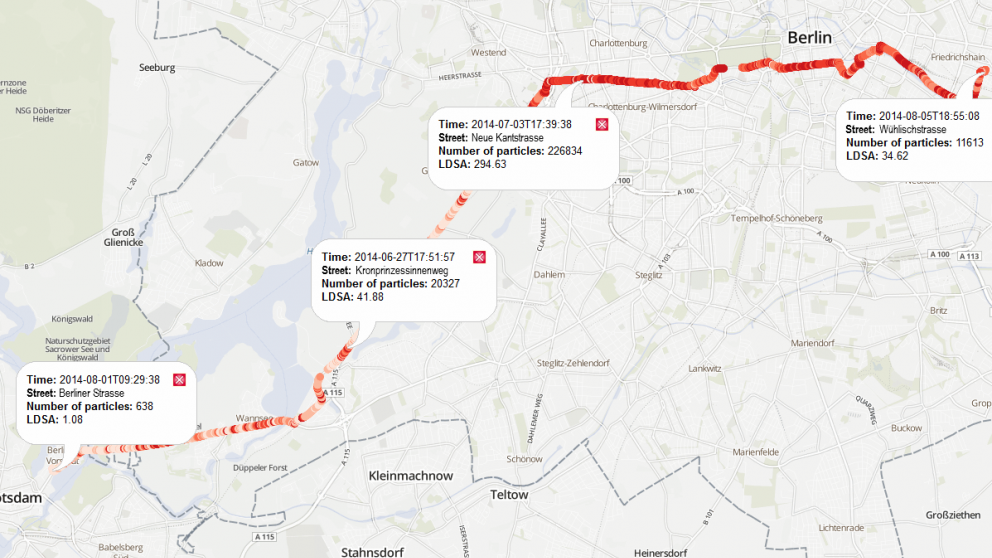How Clean is the Air in Berlin? Initial Results of the BÄRLIN-2014 Measurement Campaign Bring Good News and Bad News
16.09.2014

Researchers at the IASS have recently been investigating air quality in Berlin from a new perspective – their bicycle saddles. Their measurements help us to better understand the sources and distribution of particulate matter in the city. A map illlustrating the measurements recorded on selected routes will be published on the IASS website as soon as the data has been analysed. While the results of the measurements do depend on factors such as the weather and the time of day, one thing is clear: if you have the choice, you should cycle close to green areas and avoid bicycle lanes on busy streets, especially if buses need to cross those lanes when they stop. The IASS cooperates with the Berlin Senate, the Forschungszentrum Jülich, the Federal Environment Agency, the University of Leicester and the Karlsruhe Institute of Technology on the BÄRLIN-2014 measurement campaign.
An initial assessment of the data collected shows that the concentration of particulates often rises in the vicinity of buses – from around 10 000 particles per cubic centimetre to 100 000 or in excess of one million particles in extreme cases. If the engines of cars are left running at crossroads and traffic lights, particulate matter can rise up to eight times above normal levels. Building sites can have the same polluting effect, depending on the type of work being carried out. The good news for cyclists is that Berlin’s many green areas noticeably lessen pollution from particulates and ozone. Particulate matter is a kind of cocktail of various elements, including soot, mineral dust, pollen, bacteria, nitrates and sulphureous substances. The smallest of these particles can enter the human body via the airways, the lungs and the bloodstream and cause great damage. The World Health Organisation (WHO) has categorised particulate matter as carcinogenic. In 2005, the European Union set upper limits that should not be exceeded because of the health hazards that would result.
IASS researchers took measurements from 2 June to 29 August at a fixed location in the Berlin district of Neukölln and on bicycle trips, where cyclists used rucksacks with inbuilt measuring devices. The illustration of the particulate measurements recorded on a single bicycle trip shows the different levels of air pollution in different parts of Berlin. Each circle represents a single measurement, so the values are not averages, but can vary widely. The shade of red used indicates the level of particulate air pollution on the day of the bicycle trip. In general, the values are low in green areas and higher in residential areas. The highest values were recorded at major traffic junctions, crossroads, and on routes with bus lanes and bus stops.
IASS researchers are currently analysing the results of the measurements. Throughout the planning phase, campaign and analysis, the IASS coworkers have been meeting regularly with the Berlin senate administration to discuss the project and the steps that can be taken to reduce air pollution.
Map:
Illustration of the particulate measurements recorded on a single bicycle trip.
16.09.2014
Contact
